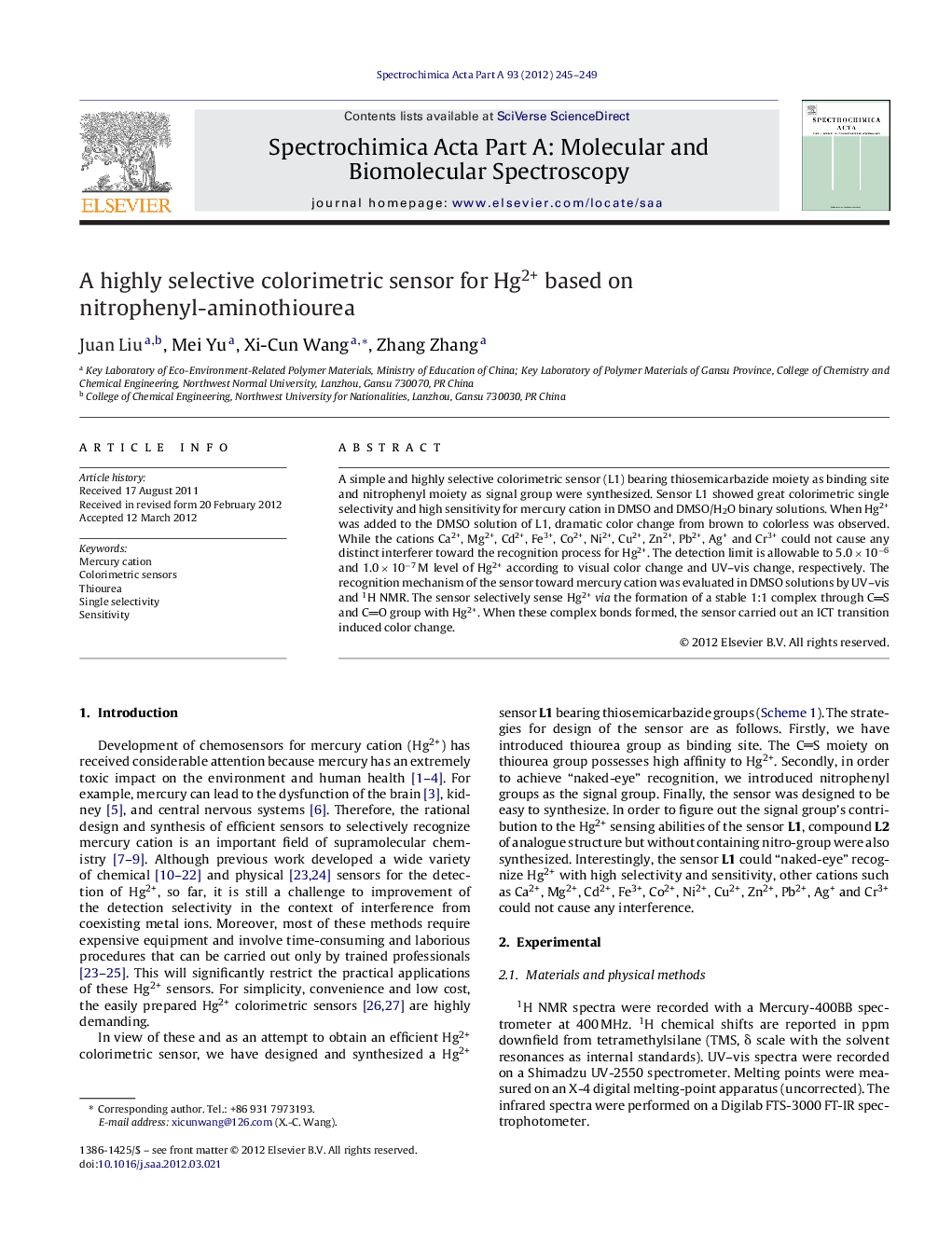| Article ID | Journal | Published Year | Pages | File Type |
|---|---|---|---|---|
| 1232785 | Spectrochimica Acta Part A: Molecular and Biomolecular Spectroscopy | 2012 | 5 Pages |
A simple and highly selective colorimetric sensor (L1) bearing thiosemicarbazide moiety as binding site and nitrophenyl moiety as signal group were synthesized. Sensor L1 showed great colorimetric single selectivity and high sensitivity for mercury cation in DMSO and DMSO/H2O binary solutions. When Hg2+ was added to the DMSO solution of L1, dramatic color change from brown to colorless was observed. While the cations Ca2+, Mg2+, Cd2+, Fe3+, Co2+, Ni2+, Cu2+, Zn2+, Pb2+, Ag+ and Cr3+ could not cause any distinct interferer toward the recognition process for Hg2+. The detection limit is allowable to 5.0 × 10−6 and 1.0 × 10−7 M level of Hg2+ according to visual color change and UV–vis change, respectively. The recognition mechanism of the sensor toward mercury cation was evaluated in DMSO solutions by UV–vis and 1H NMR. The sensor selectively sense Hg2+via the formation of a stable 1:1 complex through CS and CO group with Hg2+. When these complex bonds formed, the sensor carried out an ICT transition induced color change.
Graphical abstractFigure optionsDownload full-size imageDownload as PowerPoint slideHighlights► Sensor L1 exhibited single selectivity colorimetric sense abilities for Hg2+. ► The detection limit is 1.0 × 10−7 M for Hg2+, pointing to the high sensitivity. ► Sensor L1 was designed easy-to-make
